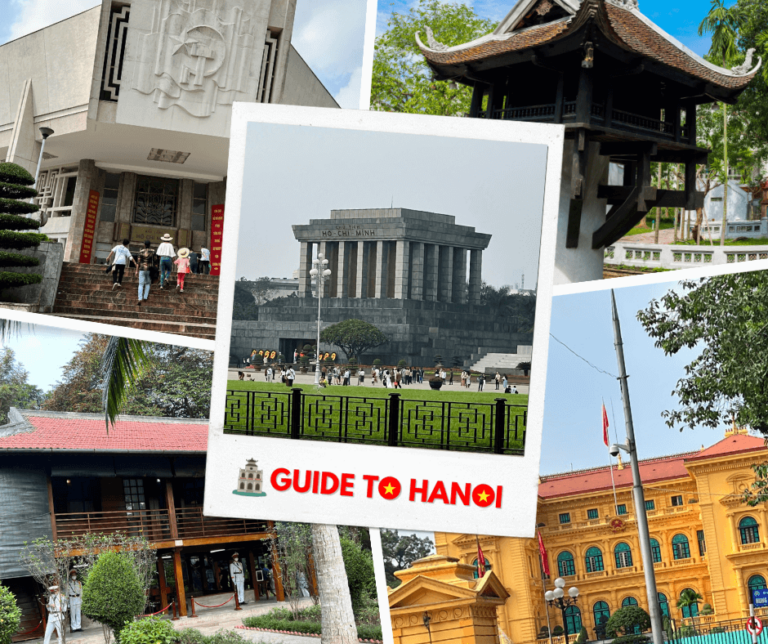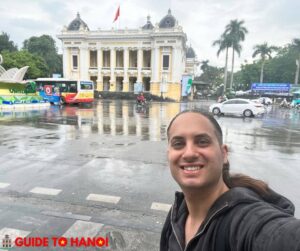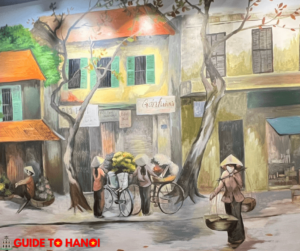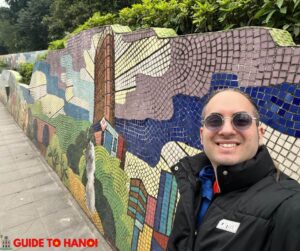Ho Chi Minh Mausoleum Complex
Welcome to the Ho Chi Minh Mausoleum Complex, a place of great historical and cultural significance in the heart of Hanoi, Vietnam.
This sprawling complex is dedicated to the memory of Ho Chi Minh, the revolutionary leader who played a pivotal role in Vietnam’s struggle for independence.
The complex symbolizes the nation’s gratitude and respect for Ho Chi Minh, affectionately known as Uncle Ho.
It comprises several key attractions, including the Ho Chi Minh Museum, One Pillar Pagoda, Ho Chi Minh’s Mausoleum, Ho Chi Minh’s Stilt House, the Presidential Palace, Ba Dinh Square, and surrounding gardens.
Each attraction offers a unique perspective on Ho Chi Minh’s life and legacy and insights into Vietnam’s rich history and culture.
Whether you’re interested in history and architecture or simply looking to explore a significant part of Vietnam’s past, the Ho Chi Minh Mausoleum Complex has something to offer every visitor.
Join us on a journey through this iconic complex as we explore its various attractions and delve into the life and times of Ho Chi Minh.
Ho Chi Minh’s Mausoleum: Paying Homage to the Father of Vietnam
A visit to Hanoi is incomplete without paying respects to Ho Chi Minh at his mausoleum.
The imposing structure houses the embalmed body of Uncle Ho, as he is affectionately known, in a solemn and respectful setting.
Visitors from all over the world come here to honor his memory and learn more about his legacy.
Ho Chi Minh’s Stilt House: A Glimpse into the Leader’s Simple Life
Adjacent to the mausoleum is Ho Chi Minh’s Stilt House, where he lived and worked for the last years of his life.
The house, built in traditional Vietnamese style, starkly contrasts the grandeur of the Presidential Palace nearby.
Visitors can see the revered leader’s simple living quarters and personal belongings, offering a glimpse into his daily life.
Ho Chi Minh Museum: Where History Meets Modernity
Step into the Ho Chi Minh Museum, and you’ll immerse yourself in the life and times of one of Vietnam’s most iconic leaders.
The museum showcases Ho Chi Minh’s revolutionary journey through a fascinating collection of artifacts, documents, and multimedia displays.
The museum provides a thorough glimpse into the man behind the legend, from his modest beginnings to his crucial role in the country’s independence movement.
Presidential Palace: A Symbol of Vietnam’s Resilience
The Presidential Palace, with its distinctive yellow facade and colonial architecture, symbolizes Vietnam’s resilience and independence.
Initially constructed as the residence for the French Governor-General, the building eventually served as the official residence for the President of Vietnam.
Today, the palace is used for official government functions and is not open to the public, but its grandeur can be admired from the outside.
One Pillar Pagoda: A Serene Oasis in the City
Lush gardens surround the One Pillar Pagoda and offer a beautiful photo spot in the heart of Hanoi.
Built-in the 11th century, the pagoda is a masterpiece of Vietnamese architecture, with its unique structure standing on a single pillar in the middle of a lotus pond.
Legend has it that Emperor Ly Thai Tong built the pagoda after a divine vision, making it a place of great spiritual significance.
Ba Dinh Square: Where History Was Made
Ba Dinh Square, located just in front of the Ho Chi Minh Mausoleum, is where President Ho Chi Minh read the Declaration of Independence of the Democratic Republic of Vietnam on September 2, 1945.
This historic moment marked the birth of modern Vietnam and is commemorated with a large granite monument in the square.
Surrounding Gardens: A Peaceful Retreat
The Ho Chi Minh Mausoleum Complex is surrounded by beautifully landscaped gardens, making it a perfect place to unwind and soak in the serenity.
Stroll through the gardens, marvel at the blooming flowers, and soak in the tranquil atmosphere of this historic site.
Whether you’re a history buff, a nature lover, or simply curious about Vietnam’s past, visiting the Ho Chi Minh Mausoleum Complex is one of the most popular places to visit and a must-do experience in Hanoi.
Pay homage to a great leader, explore centuries-old pagodas, and immerse yourself in Vietnam’s rich history and culture.

| Attraction | Description |
|---|---|
| Ho Chi Minh Museum | Offers insights into Ho Chi Minh’s life and revolutionary journey. |
| One Pillar Pagoda | Ancient pagoda with unique architecture, surrounded by lush gardens. |
| Ho Chi Minh’s Mausoleum | The final resting place of Ho Chi Minh is preserved and open to the public. |
| Ho Chi Minh’s Stilt House | A simple dwelling where Ho Chi Minh lived and worked in his later years. |
| Presidential Palace | Former residence of the French Governor-General, later used by the President of Vietnam. |
| Ba Dinh Square | The historic site where Ho Chi Minh proclaimed Vietnam’s independence. |
| Surrounding Gardens | Beautifully landscaped gardens offer a peaceful retreat. |
What is the Ho Chi Minh complex?
The Ho Chi Minh Mausoleum Complex in Hanoi, Vietnam, is a significant historical site dedicated to Ho Chi Minh, the revolutionary leader and founding father of the Democratic Republic of Vietnam (now the Socialist Republic of Vietnam). The complex includes several vital landmarks:
Ho Chi Minh’s Mausoleum: This is the final resting place of Ho Chi Minh, where his embalmed body is preserved and displayed for public viewing.
Ho Chi Minh Museum is dedicated to preserving and showcasing artifacts, documents, and photographs of Ho Chi Minh’s life and revolutionary activities.
One Pillar Pagoda is a historic Buddhist temple built in the 11th century, known for its unique architecture and cultural significance.
Ho Chi Minh’s Stilt House: This is the traditional Vietnamese stilt house where Ho Chi Minh lived and worked from 1958 until his death in 1969.
Presidential Palace: Originally built as the residence of the French Governor-General of Indochina, later used as the official residence of the President of Vietnam.
Ba Dinh Square: The site where Ho Chi Minh read the Declaration of Independence of Vietnam on September 2, 1945, marking the birth of the Democratic Republic of Vietnam.
Surrounding Gardens: Beautifully landscaped gardens surround the complex, offering visitors a peaceful and scenic environment.
Overall, the Ho Chi Minh Mausoleum Complex is a place of great historical, cultural, and political significance in Vietnam. It attracts visitors from around the world who come to pay their respects to Ho Chi Minh and learn about Vietnam’s history.
What is the dress code for Ho Chi Minh complex?
The dress code for visiting the Ho Chi Minh Mausoleum Complex is strict and enforced to show respect for Ho Chi Minh, the revered leader.
Visitors are required to dress modestly and formally. Here are some specific guidelines:
Clothing: Wear clothing that covers your shoulders and knees. Avoid wearing shorts, mini-skirts, sleeveless tops, or revealing clothing.
Footwear: Wear comfortable shoes as you may need to walk long distances, especially if you plan to explore the surrounding gardens.
Behavior: Maintain a respectful and quiet demeanor while inside the complex. Photography is allowed but not encouraged, especially inside the mausoleum.
Following these guidelines, you can ensure a respectful visit to the Ho Chi Minh Mausoleum Complex and show your appreciation for Vietnam’s history and culture.
Address:
- 1 Hùng Vương, Điện Biên, Ba Đình, Hà Nội
Opening Hours:
- Daily: 7:00–17:00
- For the mausoleum's hours, please click here
Entrance Fee:
- Free




